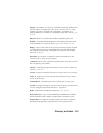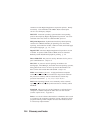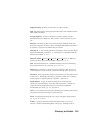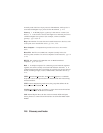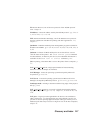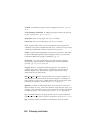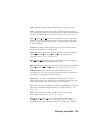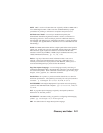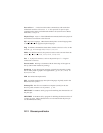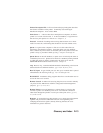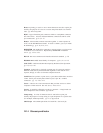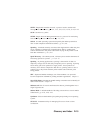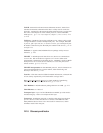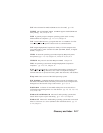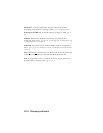Glossary and Index D-13
Printer Description File A file used in PostScript printing that describes
the features available on the printer. Commonly used with Apple
Macintosh computers. Also called a PPD.
Print Server 1. A device that allows multiple host computers to share a
printer over a local area network. 2. In Novell NetWare, a logical device
that services print queues on a file server. Chapter 1, 5.
Protocol A method of sending and receiving data between two or more
nodes on a network, and insuring that the data is received without errors.
Queue A region on the computer or file server's disk where files are
temporarily stored before printing. Since the queue can store multiple
files, it effectively allows users to send their jobs to the printer even if the
printer is busy (a procedure called spooling). Chapters 4 through 12.
Queue Server In Novell NetWare, a queue server is basically the same as
a NetWare print server. Queue Server mode is a NetWare printing method
in which the printer is directly connected to the print server with no
PSERVER NLM installed on the file server. Chapter 5.
rarp Reverse Arp, a standard TCP/IP method of determining a devices IP
address based on its Ethernet address. pp. 4-14, 4-16, 4-17, A-13.
Raw TCP port A type of TCP port (see TCP port) in which data is passed
unmodified to the receiving node. pp. 1-2, 4-23 through 4-25.
RCONSOLE A NetWare utility program that allows a workstation user to
access the file server console.
Remote Console A method of accessing the print server console remotely
via protocols like TELNET or NCP for configuration and management
purposes. pp. 1-3; A-1 to A-3.
Remote Printer In Novell NetWare, a remote printer is a device that
connects a printer to a NetWare print server via a network connection
rather than through the parallel or serial port of the print server. pp. 5-2,
5-3; 5-18 to 5-25.
Repeater A network devices that connects two or more network segments
together and provides the additional function of strengthening and
reshaping the electrical signals, thereby allowing the network to be
extended over greater distances.



